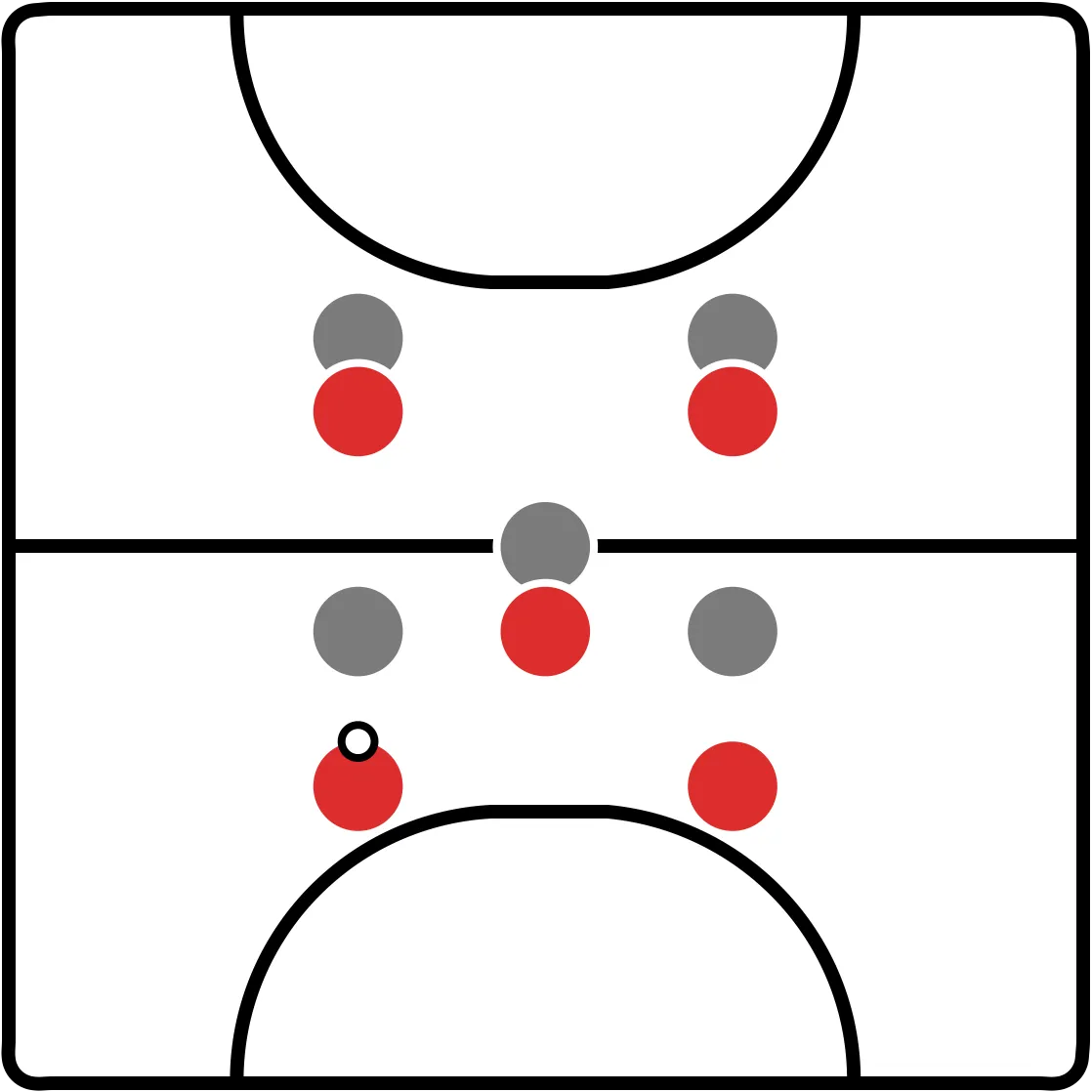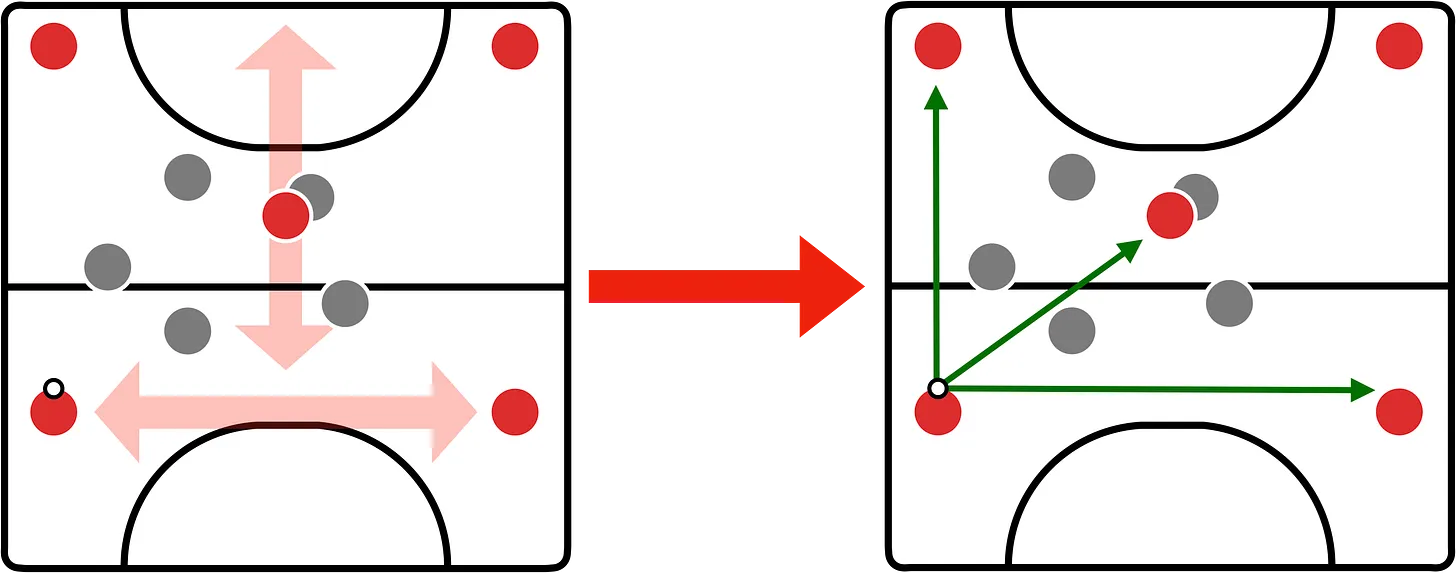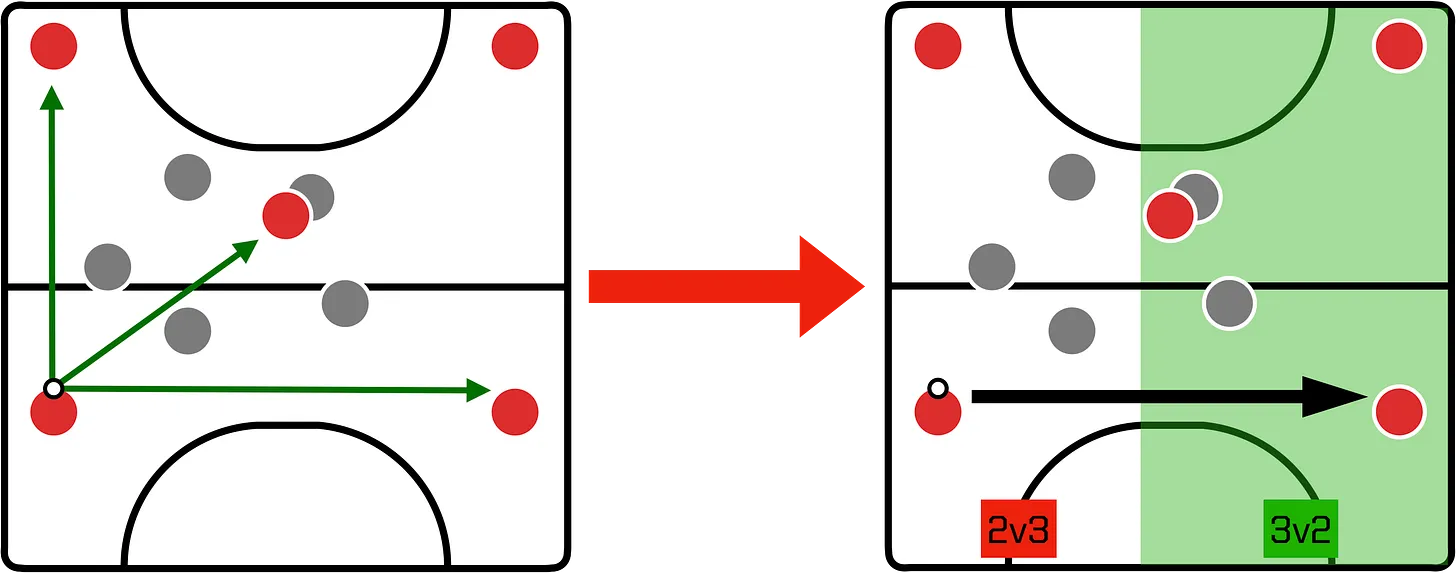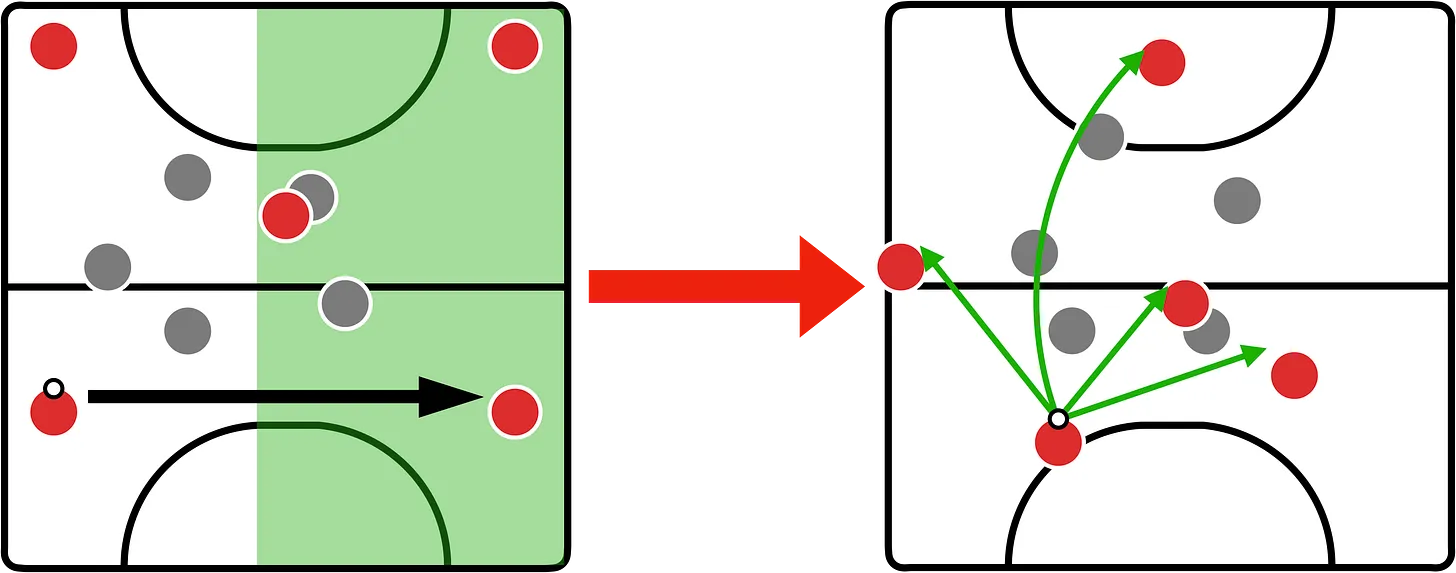The progression every team needs
We know how to play 2v1. Now we'll discuss how we can use it in more situations on the pitch.
Some time ago, I went to watch an 8th division training session. The coach had planned a very good methodological progression, with the objective of training driving control and profiled receptions. The exercises went very well, and they executed them perfectly. At the end of the training, they played a 6v6 game, where, in theory, the concepts worked on throughout the training should have been applied.
The game was very bad. Chaotic.
For any concept we want to develop in training, the objective should be to be able to apply it. First in the final game and then in an official match. If we don't achieve this, no matter how good the training is, unfortunately it's not very useful.
This made me think, as it's not an isolated case. In many clubs, there are rigid plans that say things like: "In 8th division, we train X." And this doesn't work. Each team has its own reality, and "copy/paste" recipes cannot be applied. It's necessary to observe and understand what that team needs at that moment.
We can't teach how to flick before the know how to push.
I got home and started thinking. I wanted to understand why that training, which seemed so well put together, had failed. That's how the idea I want to share today was born: a proposal to teach offensive game principles, in the order the game needs.
🔢 In what order do we teach game principles?
The first thing I want to clarify is that there are no "universal game principles." The ones I share here are the ones I personally chose and consider the most important. If you want to know more about game principles, you can watch this talk (in Spanish) I gave during the pandemic.
Let's imagine this 5v5 game (which was somewhat what I saw in that 8th division training session). When you see this image... What's the first thing you would ask the red team, the team in possession?
I'll try to make this easy and clear for all: make the field as big as possible.
If we don't enlarge the spaces, everything becomes more difficult. That's why it's the first principle any team should always apply.
1️⃣ Widen the field
Just by applying this, the difference in the photo is notable.
+ separation = + space for rivals to defend = + time for us
It's important to always have width and depth to enlarge the space in all directions.
Almost all teams use the entire width, but the vast majority do not use depth.
2️⃣ Stick to Stick
Hand in hand with widening the space, we need the quality of passing and receiving to be good. If we want to move the ball, we need to be able to do it quickly.
Quality pass + Quality reception = Game speed
This principle has two aspects: one technical and one tactical.
Because if we want to play stick-to-stick passes, no matter how much quality we have, we won't achieve it if the teammates of the player with the ball are not well positioned.
Therefore, as teammates, we should always ask ourselves:
Am I helping the game with my position? Whether giving a passing option or generating space for a teammate, my place on the field must have a purpose.
3️⃣ Play the superiority
The next step is to have a more global vision of the game to understand where we should attack.
Our team should always be "counting" in their heads:
On which side do we have more players than the opponent?
But knowing where to attack is not enough.
Once the superiority is detected, we need to move the ball with good speed so that the opponent doesn't reposition themselves during that journey.
I've seen many teams that understand superiority and try to "attack on the opposite side," but due to technical deficiencies, they never manage to accelerate with real superiority.
That's why the "Stick to Stick" principle is so important.
4️⃣ Offense
The fourth and final principle I'm going to discuss today is "Offense." (The name never quite convinced me, so if you have a better idea, I'm all ears).
The first thing I want us to understand here is that if we can make a clearance and give it directly to our 9 to score, we have to do it.
Obviously, 99% of the time, that pass will be defended. But that doesn't mean we shouldn't always look for it.
Here's a video that clearly shows the intention of being offensive.
When the center-back gets the ball, the pass to the 9 is closed, so they move it out wide. The next player, as soon as they receive it, looks again if they can play into the area. They find a passing angle and execute it perfectly.
Sometimes, you don’t need 15 passes to score.
Many teams move the ball and forget why they do it.
We move it to move the defense.
To open angles.
To create passing lanes that allow us to break through and advance.
And when that appears, we have to identify it and execute it.
Another main change this principle brings is taking more aggressive positions, as we always want, whenever we can, to break defensive lines.
That's where the 2v1 comes in, which is the basis of everything.
Understanding the concept of "winning passing lane" will be key to being offensive.
This principle is like "the next level" of "Stick to Stick."
"Stick to Stick" asks us to be in a position where we can receive the ball.
"Offensive" adds to that, that this position be aggressive, allowing us to receive breaking a line and prepared to play forward.
This video is a great example of how a player, by taking a good, aggressive position, can break an entire block. And, as soon as space opens up, they play directly to the 9.
🧭 Review
If we look at it all together, the progression is clear:
Widen the space
Make the field as big as possible, in width and depth.Stick to Stick
Always have several passing options to choose the best one, and have the ability to stop and pass the ball at good speed with precision.Read the superiority
Identify where it's best for us to attack, where we have more players than the opponent.Be offensive
Play forward. Try to go towards the opponent's goal as quickly and safely as possible. Break lines.
That's all for today.
I hope this mini-guide helps you look at your teams and analyze if these principles are truly learned and applied... or if some still need reinforcement.
I assure you that, however basic they may seem, these principles can change a team's entire game.
As always, if you liked it, share it on WhatsApp or wherever in your coaches' groups!
Don't hesitate to reply with your opinions; your comments help me decide what to write about in the future!
Until next time,
Javi











